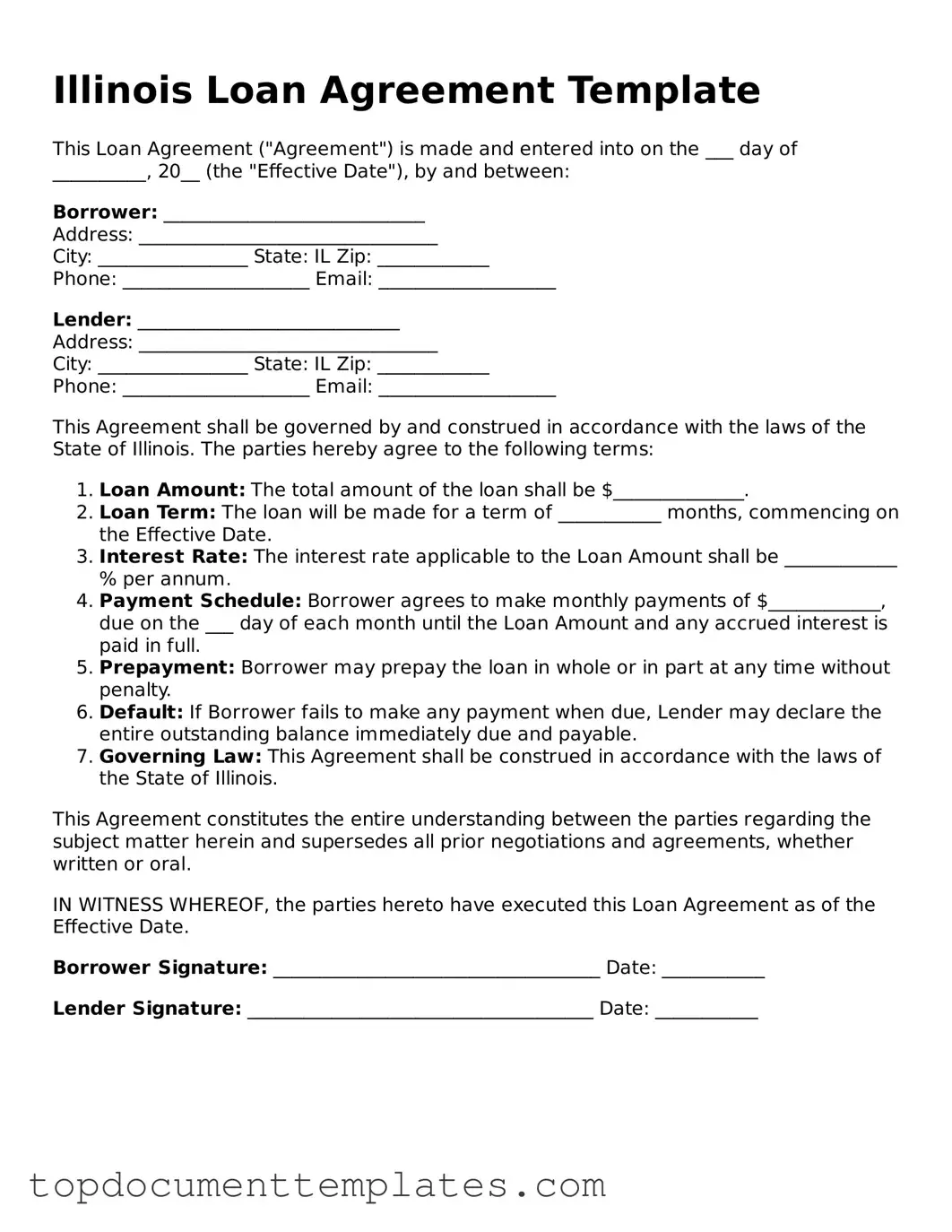Valid Loan Agreement Form for Illinois State
The Illinois Loan Agreement form is a legal document that outlines the terms and conditions under which a borrower receives funds from a lender. This form serves to protect both parties by clearly defining the repayment schedule, interest rates, and any collateral involved. To ensure a smooth borrowing process, it is essential to fill out the form accurately; click the button below to get started.
Open This Form
